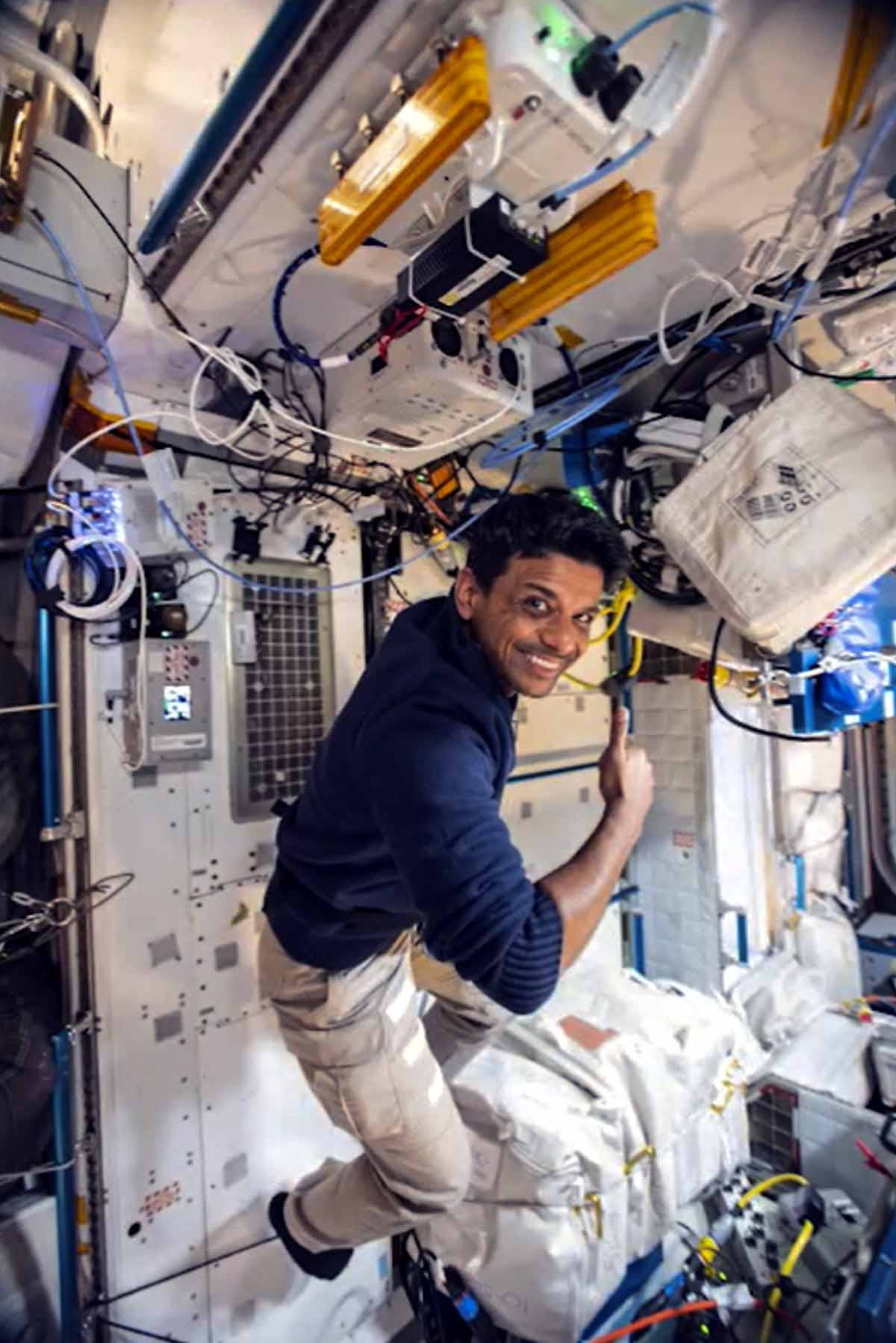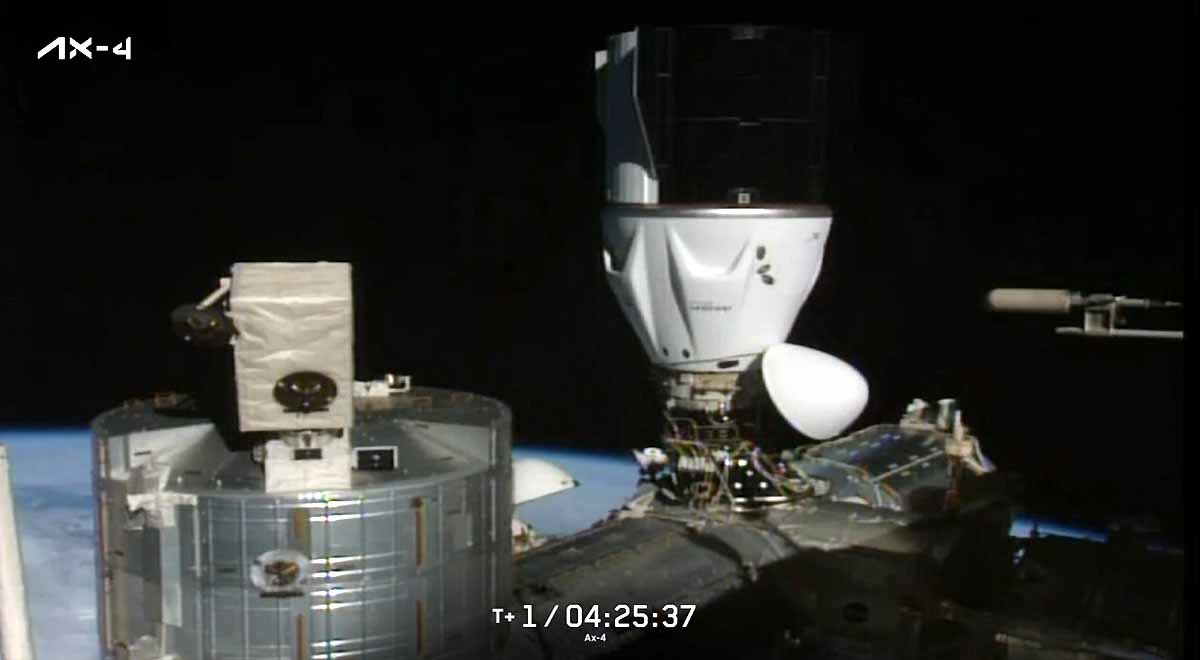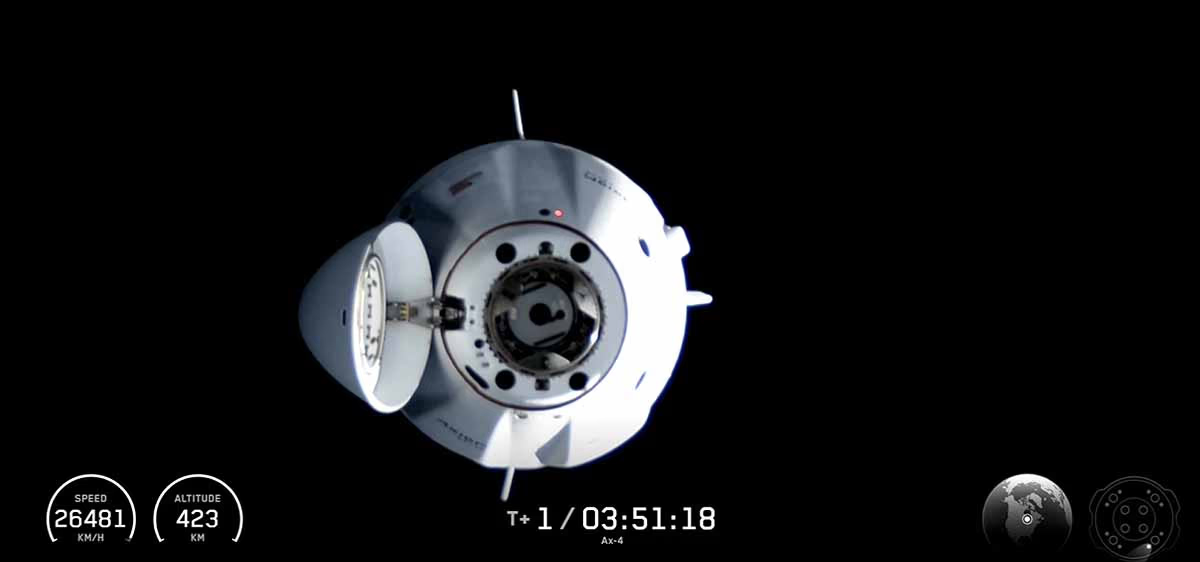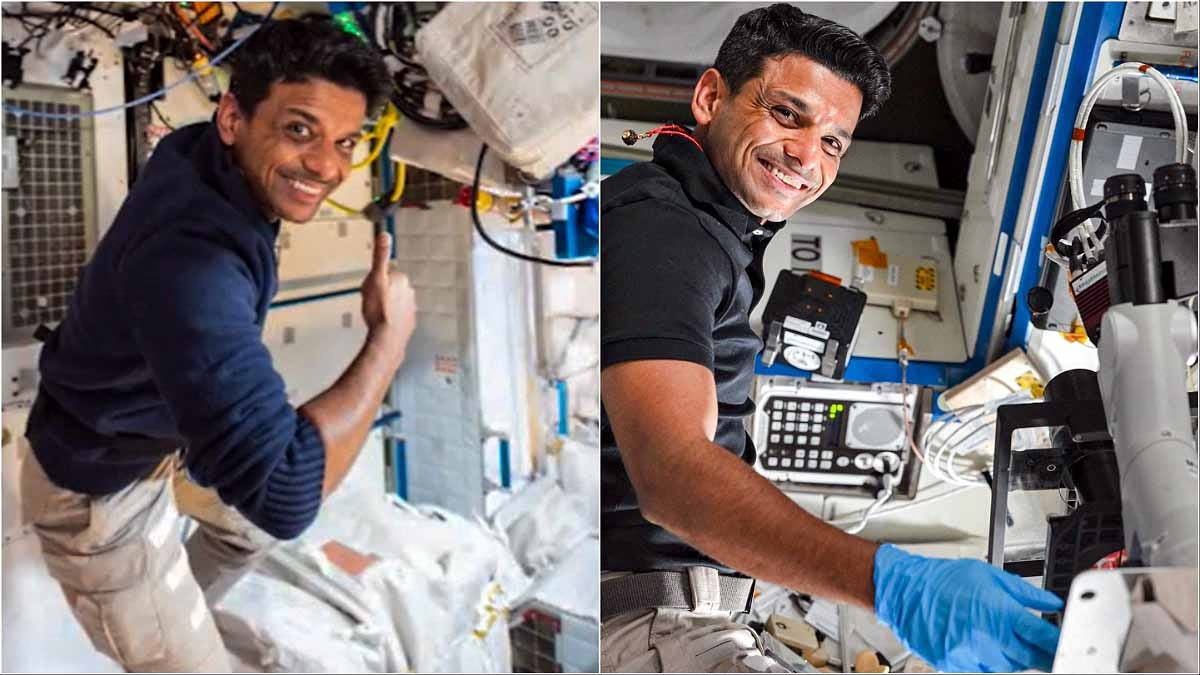Indian astronaut Group Captain Shubhanshu Shukla has been on the International Space Station (ISS) as part of the Axiom-4 mission for 12 days. This mission launched on June 25, 2025, from Florida’s Kennedy Space Center on SpaceX’s Falcon 9 rocket. Shubhanshu and his fellow astronauts, Commander Peggy Whitson (USA), Slavos Uznanski-Wisniewski (Poland), and Tibor Kapu (Hungary) can return to Earth anytime after July 10, 2025.
The European Space Agency (ESA) indicated that their return is not possible before July 14, implying a potential delay of 3-4 days. Let’s delve into the reasons for this delay and understand the entire return process.
Also Read:

Source: aajtak
Reasons for the Delay in Return
Several potential reasons account for a 3-4-day delay in Shubhanshu Shukla and the Axiom-4 crew’s return, linked to technical and weather-related factors. Let’s explore these further...
Adverse Weather at the Florida Coast
The Axiom-4 crew will return to Earth in SpaceX’s Dragon capsule 'Grace', planning a soft splashdown in the Atlantic Ocean or the Gulf of Mexico near the Florida coast. However, adverse weather conditions such as strong winds, rain, or stormy seas in the region would make a safe splashdown unfeasible. ESA and NASA have reported potential delays in the return until July 14 due to weather.
For instance, during the Axiom-1 mission, inclement weather necessitated the crew spending additional days aboard the ISS.
Also Read:
Technical Checks on ISS
A recent pressure leak problem emerged in the Russian Zvezda module of the ISS. NASA and Roscosmos repaired it, but a new pressure signature was observed afterward. Time is needed by NASA and Roscosmos to examine this further, resulting in delays in Axiom-4’s launch and return.
This investigation is vital because the ISS is an enclosed environment, ensuring station safety before adding or returning any crew members is paramount.

Source: aajtak
Spacecraft and Launch Window
Delays occurred in Axiom-4’s launch process due to issues such as a Falcon 9 rocket liquid oxygen leak, Dragon capsule electrical harness problems, and adverse weather. These technical difficulties postponed the mission until late June 2025. For their return, a thorough inspection of the Dragon capsule is necessary to ensure crew safety.
Additionally, precise timing (launch window) is required to align the ISS and the Dragon capsule orbit. If missed due to weather or technical issues, waiting for the next suitable launch window becomes mandatory.
Also Read:
Other ISS Operations
Various missions operate concurrently on the ISS, like Crew-10 and Crew-11, with limited docking ports (parking spots). The Dragon capsule from Axiom-4 occupies a specific docking port; schedule changes due to other missions may cause delays in return.
NASA ensures a minimum gap of 48 hours between one mission’s return and another’s launch, allowing Dragon capsule inspection post-splashdown.
Complete Return Process
The return of the Axiom-4 crew to Earth is a complex process involving multiple stages.

Source: aajtak
Preparation and Undocking
Preparations:
The crew completes their scientific experiments, packing essential items (such as experimental samples, seeds, and data) into the Dragon capsule. Shubhanshu stored fenugreek and mung bean seeds in the freezer, destined for analysis on Earth.
Medical Check-up:
Before returning, the crew undergoes medical check-ups to ensure they are fit for re-entry. ESA’s space medicine team will monitor Shubhanshu and other crew members.
Undocking:
The Dragon capsule detaches from the ISS, an automatic process monitored by the crew and ground control (NASA and SpaceX). Axiom-4’s Dragon capsule ‘Grace’ docked at the ISS on June 26, and undocking can occur post-July 14.
Also Read: PHOTOS: Shubhanshu Shukla Joins Astronauts’ Ranks as Number 634, Receives Grand Welcome... Sends First Message to India from Space Station
Re-entry Journey
Post-undocking, the Dragon capsule distances itself from the ISS, adjusting its trajectory towards Earth. This process takes approximately 28 hours, needing the capsule to slow from ISS’s orbit speed (28,000 km/h) to the Earth’s surface.
The capsule’s speed and direction are meticulously controlled via ground control. The Dragon features cutting-edge life support systems and automatic docking technology.
Atmospheric Re-entry
The Dragon capsule re-enters Earth’s atmosphere, traveling at speeds of 28,000 km/h. During this phase, the capsule’s exterior heat shield withstands temperatures up to 2000°C. The parachute system gradually decelerates the capsule for a safe water touchdown.

Source: aajtak
Splashdown
The Dragon capsule makes a soft splashdown near the Florida coast in the Atlantic Ocean or Gulf of Mexico, location selected based on weather and sea conditions.
Following splashdown, SpaceX and NASA recovery teams immediately reach the capsule. Crew members are extracted via boat or helicopter for medical assessment.
Post-Landing Procedure
Crew members are transported to a medical facility, undergoing health checks. Prolonged microgravity exposure in space causes bodily changes (e.g., muscle and bone weakness), requiring ESA space medicine team to provide Shubhanshu and crew a recovery program, aiding re-adaptation to Earth’s gravity.
Experimental samples (e.g., fenugreek and mung bean seeds) are handed to scientists for analysis by ISRO and other institutions in India.
Also Read:
Shubhanshu Shukla's Contributions
Shubhanshu conducted 60 experiments on the ISS, including 7 for ISRO and 5 in ISRO-NASA collaboration. These include growing fenugreek and mung bean seeds, studying microalgae, and stem cell research. Such experiments aim to aid in sustainable space agriculture and create life-support systems for long-duration space travel.
What if Delays Increase?
If return isn’t feasible by July 14 due to weather or technical setbacks, NASA and SpaceX will await the next launch window in mid-July.
The crew may need to spend additional days on the ISS, stocked with ample food, oxygen, and resources. The Axiom-1 mission similarly saw the crew extend their stay by 17 days due to unfavorable weather.
ISRO and NASA prioritize crew safety, hence not taking any undue risks.




